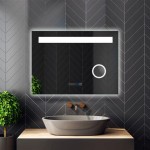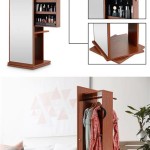Transforming Your Mirror: Creating the Mercury Glass Look
The alluring beauty of mercury glass has captivated designers and homeowners for centuries. Its shimmering, opalescent surface, reminiscent of liquid metal, adds a touch of vintage charm and elegance to any space. While genuine mercury glass, crafted using actual mercury, is no longer produced due to its toxicity, the desire for this distinctive look persists. Thankfully, achieving the mercury glass effect on a mirror is a DIY-friendly project accessible to all. This article will guide you through the process, exploring the materials, techniques, and considerations involved in transforming your mirror into a mesmerizing work of art.
1. Understanding the Mercury Glass Effect
The mercury glass look is characterized by a silvered surface that appears to have a slight rippling or uneven quality, giving it a depth and texture that sets it apart from ordinary mirrors. This effect is achieved by creating a thin layer of metallic paint that is applied over a base coat. The unevenness comes from the way the metallic paint interacts with the base coat, creating a subtle but captivating depth.
2. Materials and Tools You'll Need
To embark on your mercury glass transformation, you'll need a few essential materials and tools. These include:
- Mirror: Choose a mirror that's clean and in good condition. It's best to start with a smooth surface.
- Primer: A primer specifically designed for mirrors is recommended to ensure proper adhesion.
- Black Acrylic Paint: This will form the base coat for your mercury glass effect.
- Silver Metallic Paint: This paint will create the shimmering, opalescent surface.
- Paintbrushes: Use a variety of brushes to achieve different effects.
- Clean Rags: These will be useful for cleaning and wiping off excess paint.
- Optional: A sealant or varnish to protect the finished product.
3. Step-by-Step Guide to Creating Mercury Glass
Once you have your materials ready, you can begin the transformation process. Follow these steps:
- Prepare the Mirror: Clean the mirror thoroughly with a glass cleaner and microfiber cloth. Ensure it's free of dust, debris, and fingerprints.
- Prime the Mirror: Apply a thin coat of mirror primer to the entire surface of the mirror. Allow it to dry completely according to the manufacturer's instructions.
- Apply the Black Base Coat: Once the primer is dry, paint the entire mirror with a thin, even coat of black acrylic paint. Let it dry completely before proceeding.
- Create the Mercury Glass Effect: This is the artistic part of the process. You can achieve the mercury glass effect by employing various techniques:
- Dabbing: Use a small sponge or crumpled paper to dab the silver metallic paint onto the black base coat. This creates a textured, slightly uneven surface.
- Brushstrokes: Apply the silver metallic paint using a brush, creating swirling or uneven strokes. The more uneven the strokes, the more pronounced the mercury glass effect will be.
- Sponging: Dip a sea sponge in the silver metallic paint and lightly dab it onto the black paint. Experiment with different sponge shapes and sizes to create unique patterns.
- Allow to Dry: Once you're satisfied with the silver paint application, allow the mirror to dry thoroughly.
- Seal (Optional): Apply a sealant or varnish to protect the finished mercury glass effect from scratches and wear. This step is optional but recommended for longevity.
4. Tips for Success
Here are some expert tips to ensure a successful transformation:
- Practice: Before tackling your mirror, practice applying the silver metallic paint on a scrap piece of glass or cardboard. This will help you develop your technique and get comfortable with the desired effect.
- Don't Overwork the Paint: Avoid overworking the silver metallic paint, as this can create heavy layers and diminish the delicate, textured look.
- Experiment: Don't be afraid to experiment with different techniques, paint colors, and textures. The beauty of mercury glass lies in its unique, handcrafted nature.
- Safety First: Use adequate ventilation when painting and wear protective gear, such as a mask and gloves.
By following these steps and incorporating these tips, you can confidently transform your mirror into a stunning piece of mercury glass art. The result will be a shimmering, elegant accent that adds vintage charm and sophistication to your home decor.

Diy Mercury Glass Gilded Mirror Made From Old Photo Frames

Flipping Houses Home Renovation In Silicon Valley

How To Diy Antiqued Mercury Mirror Glass 17 Apart

Window Pane Mirror With Faux Antique Mercury Glass Diy

How To Create Mercury Glass Jennifer Rizzo

Use This Faux Mercury Glass Technique To Make A Vintage Style Mirror My Crappy House

Window Pane Mirror With Faux Antique Mercury Glass

Diy How To Make Vintage Mirrors Or Mercury Glass By Orly Shani
Diy Mercury Glass Tutorial Shine Your Light

D I Y Antique Mirror








